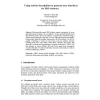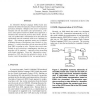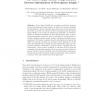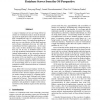301 search results - page 4 / 61 » From description to requirements: an activity theoretic pers... |
HCI
2009
13 years 6 months ago
2009
Delivering tailor-made ERP software requires automation of screen and printed report creation to be cost effective. Screens generated directly from data structures tend to have poo...
HPCS
2006
IEEE
14 years 2 months ago
2006
IEEE
An eXtensible Markup Language (XML) based data model for the Global Geodynamics Project (GGP) has been previously developed. Mindful of the need to incorporate metadata into the d...
IPMI
2005
Springer
14 years 9 months ago
2005
Springer
Abstract. Active Shape Models are a popular method for segmenting three-dimensional medical images. To obtain the required landmark correspondences, various automatic approaches ha...
CHI
2011
ACM
13 years 3 days ago
2011
ACM
The field of HCI is growing, not only in the variety of application areas or the volume of research conducted, but also in the number of analytical approaches for use in the evalu...
ICDCS
2003
IEEE
14 years 1 months ago
2003
IEEE
A range of database services are being offered on clusters of workstations today to meet the demanding needs of applications with voluminous datasets, high computational and I/O r...




